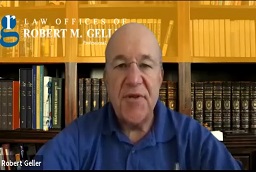If you’re reading this article it’s probably because you’ve already spent a huge amount of time thinking about the “PPC Wonderland” riddle that we posted recently on our blog. If you know nothing about the blog post and have landed on this page via another route, welcome regardless! and click here to read the post if you so wish. However, to continue with what the blog post promised, the following article will explain the answer to the following riddle:
Why is Google Campaign Management like a recipe?
The answer…
Allow us to explain.
The Common Features Between Google Campaign Management and a Recipe
Google Campaign Management is a highly organized system of tasks that are followed through in a certain order. This order allows a PPC Manager to create a campaign that a PPC advertising client would be happy with. This would be a campaign which generated lots of conversions, a high quality score and lower advertising costs as a result.
Let’s follow the steps of Google Campaign Management through to the end so that you can clearly see the relationship that it shares with the structure of any common recipe.
Step 1: Research… Think about what you want to make / cook and see what it is you might require
Before doing anything, a little research into some of the recipes on offer is important. What is it that you want to cook? In Google Campaign Management terms, what is it that you want to sell or promote? You need to take a look at the client’s website and business before you can even begin to do other things, like go to the supermarket to shop for keyword ingredients.
Step 2: Buying the ingredients… Selecting the keywords
Have you ever read those recipes that say “goose fat” but decided that buying margarine was really just the same thing? Or perhaps the recipe said “70% cocoa chocolate” and you bought Cadbury’s Dairy Milk? Maybe the recipe asked you to buy “mustard seeds” and you decided that a jar of Dijon would be just as good? In these instances it’s likely that the finished product, whether it was a cake, an omelet, roast potatoes or whatever… in these instances it’s likely that the finished product didn’t taste quite right. It may be that you ended up with a complete disaster or with something that looked good on the outside but was really disappointing to taste.
Picture the following even worse scenario…
A PPC Manager selects keywords without care, but manages to create a campaign which functions, so nobody thinks anything of it. The campaign runs moderately well. It plods along happily, but unbeknown to all, it has always had the potential to be a jaw-droppingly good campaign. The only thing it needs is that vital ingredient. Google Campaign Management like this is really disheartening. Select your keywords well. Don’t settle for something similar. Follow the list of ingredients needed to the letter.
Step 3: Following the recipe… Creating the campaign
Once keywords are in place and all the tools are at hand, there are a series of steps in Google Campaign Management that must be followed in order to create a campaign. These steps do NOT change. They are a RECIPE… a PPC recipe. Keywords need to be sorted into ad groups, advertisement text needs to be written, landing pages must be chosen, scheduling of advertisements must be decided upon, budgets must be agreed… the list that all PPC Account Managers are aware of continues.
This is just like a recipe. When making the chocolate sponge cake listed in Delia Smith’s latest cookbook, you can’t begin by putting the cake in the oven, because there’s simply no cake to put in there yet. Likewise, you can’t put the cocoa into the bowl and mix it into the mixture if you haven’t yet created the base from the flour, butter and eggs. There is a recipe, which simply means there is an order of steps which must be followed IN THAT ORDER so that the conclusion can be reached.
In Google Campaign Management, there is also an order to creating campaigns which cannot be ignored. There is a PPC recipe.
Step 4: Monitoring the dish… Analyzing the campaign
If you’re baking a cake it’s best to have a glass oven door to be able to see the cake rise without letting the heat out. You keep an eye on the cake and take it out of the oven at the appropriate moment. Removing it before or after can ruin all that previous hard work. If creating something on the hob, you might taste it every now and then and add a little more of this or a little more of that to improve its taste or consistency.
Google Campaign Management is exactly the same. You have to monitor the campaign. You cannot just leave it to keep going by itself. Things could boil over, burn dry, run out of oil or deflate. Granted, there are some recipes which state that some dishes should be left alone; they should be left to simmer and that too much prodding or stirring will only serve to destroy the flavor. Similarly, there are PPC campaigns that are like this too; campaigns which need to be left to bubble away on their own.
Either way, the point still brings us back to the perfect metaphor: Google Campaign Management is just like a recipe.
The Most Important Feature of Recipes and Google Campaign Management
On a final note, there is one essential element of a recipe that can be applied to Google Campaign Management and it is the element that is perhaps more of a Mad Hatter way of looking at things; if thinking about the kind of PPC that would exist in “PPC Wonderland” the following shot of advice will make a lot of sense.
Sometimes you need to deviate from the recipe. Sometimes swapping one ingredients on the recipe for another because of intuition or solid analytical findings is really important.
Those PPC Account Managers who follow the Google Campaign Management recipe from start to finish without experimenting with anything along the way are perhaps lacking something. Granted, the cake is always going to taste good if you are doing what the recipe tells you, but maybe someone else’s cake has that je ne sais quoi!
PPC Management demands that you think outside of the box now and then. In “Alice and Wonderland” the ravings of Johnny Depp’s Mad Hatter do appear to be only ravings on the surface, but if looked at from another perspective, from upside down and inside out, they do begin to make sense.
Therefore, in conclusion, today’s lesson in Google Campaign Management is this:
Follow the recipe. It’s there for a reason, but don’t be frightened of throwing in the odd spice every now and then, or leaving that ad group in the oven for just a tad bit longer to create a little more crisp. The final result might end up being just that extra bit tastier.



















